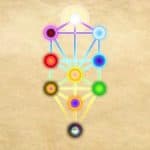This article looks to answer what is the New Thought Movement, its teachings, history, and some of its prominent leaders. It also compares it to some of the other movements and philosophies related to it. Finally, it looks at the modern state of the movement today, thus answering and providing a comprehensive guide of the New Thought Movement.
What is the New Thought Movement?
The New Thought Movement is a spiritual movement that combines metaphysical religious approaches, mind-healing, and Bible teaching interpretation. It is distinctive for its optimistic worldview, emphasis on the individual, and philosophical concepts. It emerged in the early 19th century in America with a fascination with transcendental beliefs and using the mind to cure diseases and the influence from Christian practice.
At its start, the early pioneers did not seek to create a different religion or church, yet this was the development with years. As the early members sought to define and conceptualize their thoughts in writing, it gave root to classes and churches founded by their successors.
New Thought Teachings
New Thought Movement teachings and ideas can be hard to summarize because of their amalgamation of different philosophical and religious influences. However, using their origins and their Declaration of Principles, you can pinpoint the movement’s core teachings. They include;
- There is an infinite intelligence or God that is omnipresent and omnipotent and the source of all creation.
- The spirit is the ultimate reality, while the material world is a projection of the mind.
- Mental states are carried forward to become manifestations of daily human living experience.
- Divinity dwells within every person, and all people are spiritual beings.
- The highest spiritual principle is to love unconditionally
- Being attuned with the divine thoughts is a source of power for good
- The right thoughts have a healing power
New Thought religion places plenty of emphasis on the mental state and its relationship with the spiritual state. God is the infinite intelligence, and affirming oneness with him means accepting this truth and opens one to spiritual reality, which is absolute.
In such harmonic alignment, human beings can share in God’s creative power through thoughts. Positive thoughts have generative qualities yielding healing and other favorable circumstances, while negative (wrong) thoughts lead to sickness and other negative experiences.
Another distinct quality of the New Thought Movement is the principle of evolution of thought. Unlike most religious and spiritual movements, it gives allowance for new knowledge assimilation as humankind gains a better understanding of the world. It teaches the concept of continuous revelation and provides a willingness to refine their beliefs.
Finally, the New Thought Movement teaches theological inclusion, which comes from its principle of affirming all human beings and honoring their diversity. Some churches teach that the Truth is Truth regardless of where it is found and whoever is teaching it.
In practice, the New Thought Movement does not have elaborate rituals and ceremonies as in other religions. While groups may engage in communal prayers and treatment rituals, much of the practice is based on the individual engaging with the Divine Mind through religious exercises.
These include affirmations and visualizations and largely focus on the specific area of an individual’s needs. Common needs include physical health, emotional health, personal relationships, and material prosperity.
Find many free books at our “Free New Thought Library“ – Opens in new tab

History of the New Thought Movement
Origins
The New Thought Movement had its origins in the 19th century. It came to the fore thanks to most people’s dissatisfaction with the scientific methods and the time’s medical treatment options. It was also a reaction to the religious skepticism that had marked the 17th and 18th centuries.
The New Thought Movement also started when there were many similar philosophical views of spiritual and metaphysical affairs. The most prominent among these was transcendentalism and Swedenborgianism.
Transcendentalism provides the idea that some things like spirituality are beyond the physical realm and proof and can only be realized through personal intuition. On the other hand, Swedenborgianism provided the idea that the material world is a result of spiritual causes and a divine purpose.
These two, along with other influences like Hegelianism, Platonism, and Orientalism, all informed various New Thought Movement elements.
New Thought Movement Founders
A chronological history of the New Thought Movement means tracing down its various founders. Many in the New Thought Movement regard Phineas Parkhurst Quimby as the founder of the movement. However, others before and after him also contributed to the movement’s initial beginnings and who in other circles are also considered founders.
Ralph Waldo Emerson is the most influential figure in America’s transcendentalism and thus a direct source for many New Thought founders, leaders, and authors. After studying at Harvard, he became a Unitarian minister and wrote extensively exploring transcendental philosophy. Some of his ideas that influenced the movement include;
- Every human being is an individualization of the one and only true God
- Spiritual laws which execute themselves control the center of human beings.
The concepts of Science of Mind through essays like Self-Reliance, The Over-Soul, and Compensation Phineas Quimby’s claim to the founder role of the movement is down to his professional practice and the fact that he was the first teacher of the ideas that made up the New Thought Movement in its formative periods. He studied hypnosis and was the first to practice and espouse the ideas of mind healing.
He opened a mental healing center in Portland in 1859, where he taught and treated patients, most of who became his patients and would go on to contribute significantly to the New Thought Movement.
These include the Dressers who helped spread New Thought Movement in Boston and other places, as we shall cover later. He also treated and taught Warren Felt Evans, the first author of the New Thought Movement and a notable theorist.
Finally, Phineas Quimby wrote The Quimby Manuscripts between 1846 and 1865, which was later edited by Horatio Dresser, a son of the Dressers earlier mentioned. He was the first to describe the process of mental healing, blaming illness on wrong thoughts. Healing, according to his teachings, came with the establishment of the truth.
The third figure largely credited with the founding of the New Thought Movement was Emily Curtis Hopkins. Her writings, teaching, and evangelical work saw her teach and ordain over a hundred students, many of whom became leaders of New Thought Movement organizations. Hopkins started her path at Christian Science, where she was a practitioner and editor of the Christian Science Journal.
Christian Science was started by Mary Eddy Baker, a former client, and student of Phineas Quimby. Eddy Baker, however, denied having been influenced by Quimby or New Thought practices and went on to establish Christian Science as a separate denomination.
Later on, she was dissatisfied by the religion of Eddy and left for her independent quest for spiritual truth. Hopkins moved to Chicago and, in 1887, established the Christian Science Theological Seminary independent from Eddy Baker’s.
Her school quickly became popular, and she soon branched out to New York City, Boston, and San Francisco, among other places. With time her students dropped any reference to Christian Science, and many formed Churches that were among the first of the New Thought Movement churches.
Among her students were Nona Books and Melinda Cramer, who were co-founders of Divine Science; Charles and Myrtle Fillmore co-founders of the Unity School of Christianity, Annie Rix Millitz, founder of Home of Truth and many others.
Check out our collection of “Free Online Audiobooks” and many free resources in our “Free Library”

Growth
From Hopkins teachings and evangelism, the New Thought Movement grew as her students took it abroad and started schools and churches. Six main factors fueled the growth;
- It had confident and charismatic leaders who were skilled in movement building. Most leaders carried out lectures, taught or were excellent writers, and built communities nationally and globally.
- The movement professionally empowered women, and with many of its leaders as women, it gave them a place to belong. This aspect coincided with the message for women empowering that would be the trend from the late 19th century.
- Its prosperity message resonated with a bulging middle class
- The skillful use of mass media from books to magazines and journals and later on radio allowed the movement to reach the public and maintain its developing denominations’ network.
- It was adaptable to the secularization that followed the 19th century viewing it as a material representation of the spirit and not something to be shunned.
- Its openness to new knowledge and multicultural flexibility gave it a global appeal and helped it spread beyond the Western world.
Related reading: Scientific Studies on Positive Thinking – Opens in new tab.
New Thought Movement Leaders
New Thought Movement leaders are at the heart of the movement in helping its spread and contributing to its philosophy. They include authors, healers, ministers, writers, and founders of churches and organizations.
Warren Felt Evans (1817-1889) was one of the first people to publish New Thought literature and also thought to be the first to systemize and write down Phineas Quimby ideas and practice in works such as Mental Cure in 1869, Mental Medicine in 1872, and Soul and Body in 1876 (Aff.links).
Julius Dresser (1838-93) was a popular lecturer and, along with his wife, popularized what they called the Quimby System of Mental Treatment of Diseases. His son Horatio (1866 -1954) was New Thought Movement’s first Historian and wrote A History of the New Thought Movement in 1919 (Aff.link).
Thomas Troward (1847-1916) was also a prolific lecturer and author and was a leading figure of the New Thought Movement in England. He formulated a philosophy of mental healing and named it Mental Science. He also met Emily Hopkins during her visit to London.
Another prominent early leader of the movement was Prentice Mulford (1834-1891), an author who was crucial to developing New Thought Thinking. One of his books, Your Forces and How to Use Them, in 1887(Aff.link), is where the terms ‘New Thought’ and ‘The Law of Attraction’ first came to fruition.
These leaders provided the foundation for the movement’s growth and were sources for students of the new movement.
Later leaders of the movement included;
- Nona Brooks (1861–1945), Malinda Cramer (1844–1906), co-founders of Divine Science
- Charles Fillmore (1854–1948), Myrtle Fillmore (1845–1931), co-founders of Unity
- Annie Rix Militz (1856–1924), a prominent author and founder of Homes of Truth, publisher of Master Mind magazine from 1911–1931.
- Helen Wilmans (1835–1907), founder of Mental Science
- H. Emilie Cady (1848–1941), a prominent author in Unity
- Frances Lord, one of the leaders of Britain’s New Thought Movement
- William Walker Atkinson (1862–1932) author of about 100 books and the New Thought magazine editor.
- Elizabeth Towne (1865–1960), Nautilus magazine’s publisher, president of International New Thought Alliance (INTA) from 1924 to 1925.
- Ernest S. Holmes (1887–1960), author and founder of Religious Science.
Find many free books at our “Free New Thought Library“ – Opens in new tab

New Thought Movement Books
There are thousands of New Thought Movement books written both by ministers and students of the spiritual movement and outsiders basing on teachings from the movement or related to similar sources. In the first group are books to guide believers and students on the aspects of the New
Thought Movement and have a spiritual look to it.
In the second group, you have self-help books with a primary focus on material success. The latter group includes titles like Think and Grow Rich by Napoleon Hill (1937), As a Man Thinketh (1903) by James Allen, and similar tiles of the 21st century (Aff.links).
This section, however, will focus on the spiritual and philosophical guides and primarily those in the 19th century, most of which are still used in training and ministering in the New Thought organizations. Besides books earlier mentioned, like the works of Mulford, Quimby, and Horatio
Desser, others include; (Aff.links)
- Lessons in Truth (1896), by Dr. H. Emilie Cady
- Scientific Christian Mental Practice (1974) Emma Hopkins
- Divine Science: Its Principle and Practice (1957), by Fannie Brooks James and Melinda Cramer
- High Mysticism (1920) by Emily Hopkins
- Power Through Constructive Thinking (1940), by Emmet Fox
- The Golden Key (1937), Emmet Fox
- Divine Science and Healing (1902), Melinda Cramer
- Metaphysical Bible Dictionary (1931), Charles Fillmore
- Christian Healing (1909), Charles Fillmore
- The Twelve Powers of Man (1930), Charles Fillmore
- Science of Mind (1926), Ernest Holmes
- What Religious Science Teaches (1944), Ernest Holmes
- The Dore Lectures on Mental Science (1909), Thomas Troward
- In Tune with The Infinite (1910), Ralph Waldo Trine
Find many free books at our “Free New Thought Library“ – Opens in new tab

New Thought Movement vs. Christianity
New Thought Movement does use Christianity as one of its philosophical influences. Indeed, many New Thought believers consider themselves Christians and even use the Bible, especially the four Gospels, as the central part of their instruction.
However, there are several differences, and the traditional Christian churches and denominations do not regard New Thought as part of them. The significant differences are;
- The divinity of humans – One of New Thought’s central teachings is the divinity of mankind, yet to Christianity, this is the Original Lie by Satan to Adam and at Eden, tempting them on the basis of being like God.
- Source of illness and salvation – Christianity teaches that the source of diseases and other strife is the original sin, and as such, all mankind is under the curse with salvation coming only through Jesus Christ. In New Thought, diseases and many earthly strifes come through wrong thoughts, and salvation is through affirmation and alignment with the Infinite Intelligence, God. Jesus is viewed more as a teacher than a sacrificial savior.
- Heaven in Christianity is a specific place where those saved will reside serving God after the final judgment with new spiritual bodies, etc. In New Thought, it is the ideal state of consciousness where the body and soul and in harmony with the Divine Mind. It can be made manifest on earth.
- The parables of Jesus in Christianity teach about the Kingdom of God and judgment at the end of this life. In New Thought, they are interpreted as metaphors exhorting the need to discipline thoughts weeding out the impure ones.
- The Bible is the one and final instruction for truth and Christian living. On the other hand, New Thought is a blend of various beliefs and philosophies, and it is evolving nature means there is more knowledge to acquire.
- Becoming a Christian requires baptism and belief in Christ as the Son of God who does not appear in any of the Principles of New Thought. On the contrary revised versions have deleted any references to Jesus Christ.

New Thought vs. New Age
New Thought is often confused with New Age due to several similarities, but they are fundamentally different. The similarities include;
- Belief in one and only presence and power, which is transcendent and immanent
- All have a strong optimist outlook
- All of them value meditation
- They are both fascinated with new physics
However, there are significant differences;
- New Thought predates New Age by almost a century and has a distinct history, unlike New Age.
- New Age heavily dabbles in the occult, which is not present in New Thought.
- New Age lacks a defined set or form of theology or practice, while New Thought has structure and even organizations and theology that students can learn.
- New Age often rallies against modernism, whereas New Thought embraces modernism and can function in traditional, modern, and post-modern worldviews.
- Psychologically, New Age is often inspired by people frustrated by their social conditions, which they believe to be beyond their control. On the contrary, New Thought does not have the limitation of inadequacy regarding dealing with the world. Everything is subject to mental control.

New Thought Movement Criticism
The New Thought Movement has faced criticism from different circles, especially the Abrahamic religions and the scientific community. Most religious objections stem from its differences and perspective of God, salvation, and humans’ divinity.
Scientific criticism focuses on the movement’s rejection of empirical studies that show the sources and cures of diseases. While there is an acknowledgment of the role mental attitudes and health can affect one’s general wellbeing and also treatment plans, the emphasis is that these do not work alone.
New Thought Movement, however, persists with the idea that mental states, faith, and attitudes are the sole determinants of health. Further, this approach is criticized for it may lead to victim-blaming and learned hopelessness and, as a result, hinder effective treatment.
New Thought Movement also faces criticism for not being practical in all life situations. It insists individuals can manifest their reality through thoughts while ignoring limitations from physical disability, racial and class discrimination, among others.
New Thought Movement has also been criticized for creating delusions of wellbeing or reality when practically there is no change in state. Critics point out that believing and thinking that one is successful and believing it does not translate to success.
Critics also fault the movement’s positive thinking teaching as it does not prepare individuals for the probability and reality of disappointments. When they happen, optimistic people struggle to handle it.
New Thought Today
The New Thought Movement is still strong today in various aspects and continues to impact society. New Thought Movement teachings are perpetuated in the modern world through
New Thought Communities
There are several New Thought organizations today, some tracing back to the founding period of the movement. They spread New Thought ideas with their teachings and writings. They include;
- Divine Science with over 5000 members
- Unity and its ministries and study groups worldwide and membership about 150,000 globally
- Religious Science with about 60,000 members globally
- Universal Foundation for Better Living with over 20 affiliated communities and over 20,000 members worldwide.
- Seicho-no-le is predominantly outside the US and is the largest New Thought denomination with over a million members worldwide. Masaharu Taniguchi (1893–1985) founded the denomination in Japan.
- Society for Jewish Science
- Home of Truth among the older denominations still operating today
- Agape International Spiritual Center, with over 8000 members, a relatively recent New Thought denomination having been founded in 1986.
Self-help guides
The proliferation of self-help books, especially those centered around the Law of Attraction and positive thinking, is proof of the impact of New Thought teachings many decades later. The success of books like The Secret (2006) by Rhonda Byrne and Ask and It is Given (2004) by Esther and Jerry Hicks shows how the message that thoughts can manifest one’s reality has taken hold. It remains popular as it was in the early 19th century.
Health practices
New Thought Movement has brought much attention to mental health and how a positive attitude and mental state can affect an individual’s general health.
Prosperity gospel
The New Thought Movement also impacts modern Christian practice. The trend and popularity of prosperity gospel find root in the New Thought Movement teachings. It espouses the manifestation of belief and thoughts and embraces the material world, unlike conservative Christian practice. It comes close to embracing the manifestation of heaven on earth from thoughts.
If you want to learn more about Subconscious Reprogramming and the Manifestation process. Check out my suggestions on manifestation courses and books. – Opens in new tab
Stay in Touch
 Join our newsletter by using the forms on this website or click here!
Join our newsletter by using the forms on this website or click here! Follow us on Google News
Follow us on Google News Follow us on Facebook
Follow us on Facebook
Featured Image by Exau Paluku from Pixabay






